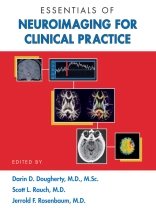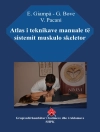The use of neuroimaging studies in psychiatry is exploding — and offers tremendous potential for practicing clinicians. Yet if you’re like many psychiatrists, you’re sometimes uncertain about which studies to use in specific situations. Until now, you’ve had to sort through the only information available — technical reviews in the literature — for guidance. But no more.
Essentials of Neuroimaging for Clinical Practice is an all-in-one resource that explains how to use these powerful techniques to improve outcomes. It demystifies neuroimaging with clear, concise, and practical advice on using today’s most advanced applications in the diagnostic workup of patients.
This practical clinical guide will help you achieve a solid understanding of the full range of neuroimaging modalities: Structural techniques such as computed tomography (CT) and magnetic resonance imaging (MRI) Functional techniques such as positron emission tomography (PET), single photon emission computed tomography (SPECT), functional magnetic resonance imaging (f MRI), and magnetic resonance spectroscopy (MRS) Other techniques such as electroencephalography (EEG) — including quantitative EEG and event-related potentials — and magnetoencephalography.
For each modality, you’ll find: A basic review of the technique — trace the development of each modality, and become familiar with its underlying technology. Guidance on when to use it — learn which techniques are best to use in specific clinical situations. Tips for ordering studies — discover how to write up orders to obtain the most accurate and detailed information from each study, including when to use contrast and how to determine the best acquisition parameters. A look at its future potential in practice and research — explore the current capabilities of each modality and the most promising strategies for improving diagnostic results.
Filled with examples of real-life imaging studies, Essentials of Neuroimaging for Clinical Practice is a must-have tool for all practicing psychiatrists and psychologists. In addition, it will serve as an excellent clinical guide for residents — and an outstanding text for courses in clinical neuroimaging for psychiatrists.
विषयसूची
Contributors Introduction Chapter 1. Computed tomography Chapter 2. Magnetic resonance imaging Chapter 3. Positron emission tomography and single photon emission computed tomography Chapter 4. Functional magnetic resonance imaging Chapter 5. Magnetic resonance spectroscopy Chapter 6. Electroencephalography, event-related potentials, and magnetoencephalography Chapter 7. Neuroimaging in psychiatric practice: what might the future hold?Index
लेखक के बारे में
Darin D. Dougherty, M.D., M.Sc., is Assistant Director of Psychiatric Neuroimaging Research in the Departments of Psychiatry and Radiology at Massachusetts General Hospital, and Assistant Professor of Psychiatry at Harvard Medical School in Boston, Massachusetts.Scott L. Rauch, M.D., is Associate Chief of Psychiatry for Neuroscience Research and Director of Psychiatric Neuroimaging Research in the Departments of Psychiatry and Radiology at Massachusetts General Hospital, and Associate Professor of Psychiatry at Harvard Medical School in Boston, Massachusetts.Jerrold F. Rosenbaum, M.D., is Chief of Psychiatry at Massachusetts General Hospital and Professor of Psychiatry at Harvard Medical School in Boston, Massachusetts.












